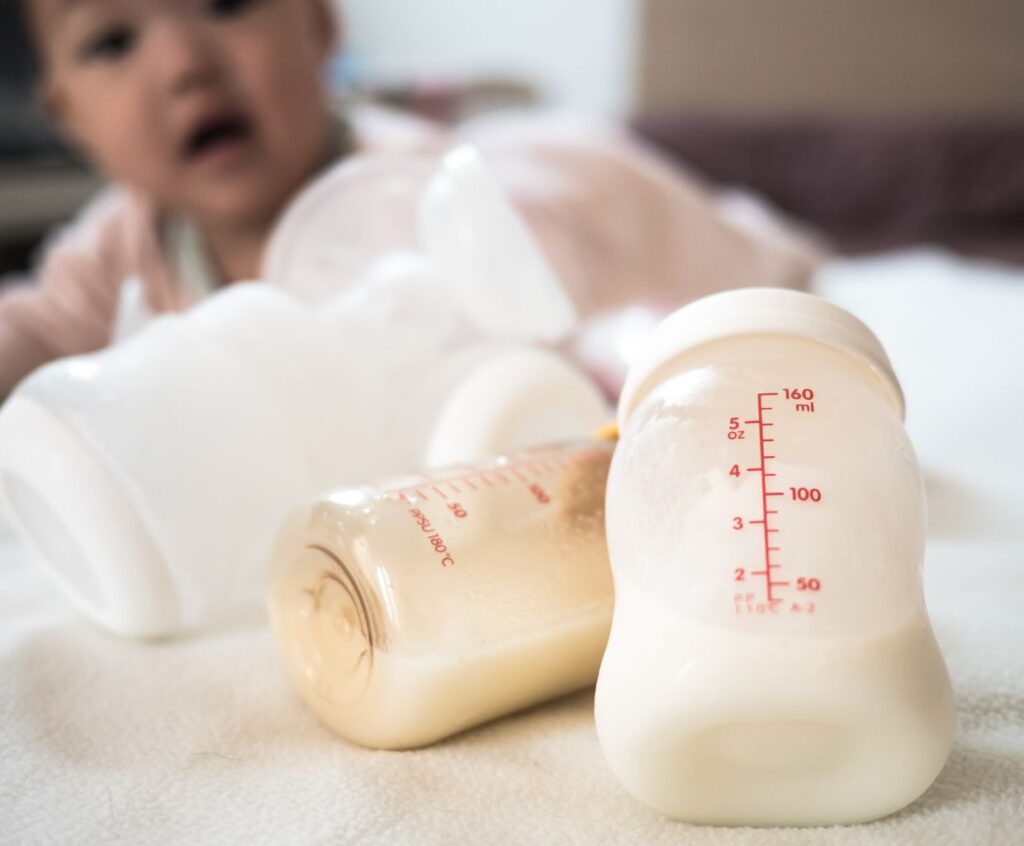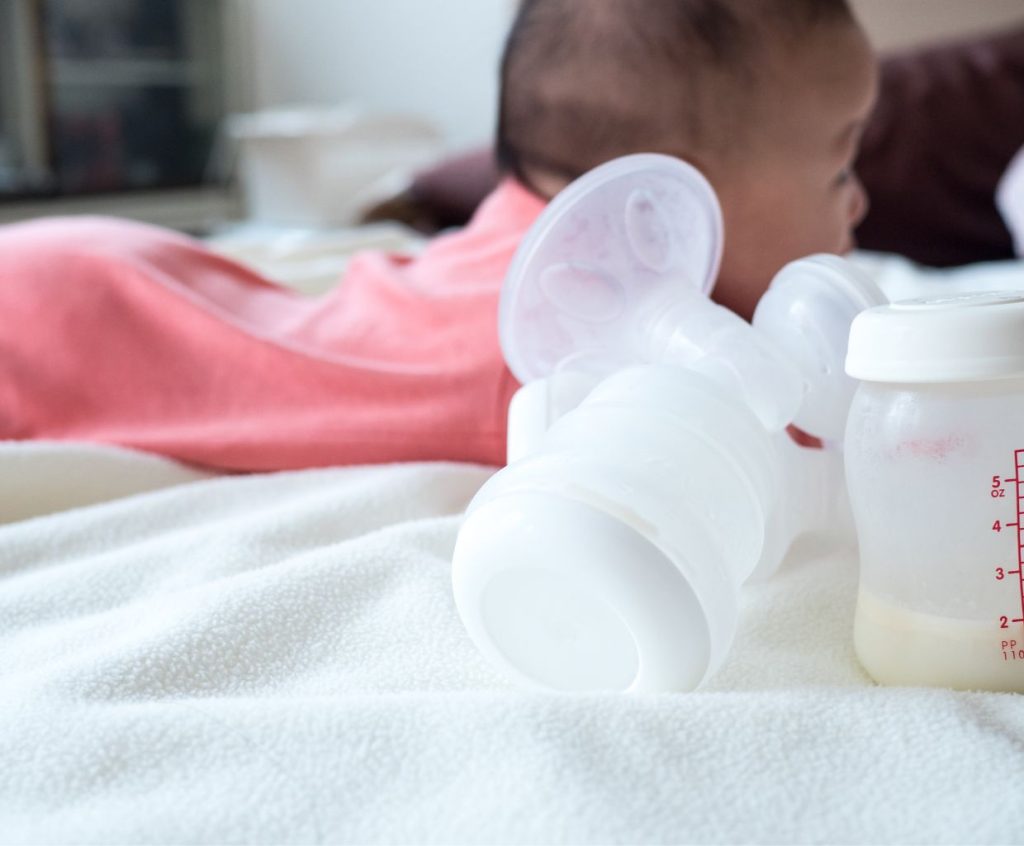How To Build A Breast Milk Stash While Breastfeeding?
Breastfeeding is a beautiful and natural way to nourish your baby, providing them with essential nutrients and a strong bond with you. However, there may be times when you want to build a breast milk stash – a supply of expressed breast milk that can be stored for future use. Whether you’re planning to return to work, want to share feeding responsibilities, or desire a backup supply, building a breast milk stash can be a practical and empowering choice for nursing mothers.
This article will guide you through building a breast milk stash while breastfeeding. We’ll explore effective pumping techniques, storage guidelines, and essential tips to help create a stash that meets your needs. Whether you’re a new mom navigating the world of breastfeeding or an experienced one seeking to optimize your milk storage efforts, this article will provide valuable insights to help you succeed in your breastfeeding journey. So, let’s embark on the journey to building a breast milk stash that ensures your baby’s nourishment and peace of mind.
1. Start Pumping Early
One of the first steps in building a breast milk stash is to start pumping early in your breastfeeding journey. It’s recommended to wait until breastfeeding is well-established, usually around four to six weeks, before introducing pumping sessions. This ensures that your baby’s feeding needs are met, and your milk supply is established.
2. Pump After Feeding Sessions
An effective way to build a milk stash is to pump after your baby’s regular feeding sessions. This extra pumping session will signal your body to produce more milk, gradually increasing your supply. Remember, it’s essential to find a balance and not overdo it, as this could lead to oversupply or interfere with your baby’s feeding routine.
3. Utilize Power Pumping
If you want to boost your milk supply, consider trying power pumping. Power pumping involves pumping for shorter periods but with shorter breaks in between. For example, you can pump for 20 minutes, rest for 10 minutes, pump for 10 minutes, rest for 10 minutes, and then pump for a final 10 minutes. This technique helps to mimic cluster feeding, stimulating your body to produce more milk.
4. Find Your Pumping Routine
Establishing a pumping routine is essential for building a breast milk stash. Find a time of day when you have a consistent milk supply, and incorporate pumping sessions into your daily schedule. Some moms prefer pumping in the morning when milk production is typically higher, while others succeed with evening pumping sessions. Experiment and find what works best for you.
5. Store Milk Properly
When building a milk stash, storing your milk is crucial to maintain its quality and safety. Use breast milk storage bags or BPA-free containers designed explicitly for freezing breast milk. Label each container with the date to keep track of freshness, and store them in the back of the freezer where the temperature is most constant. Remember to follow guidelines for thawing and using frozen breast milk.
Building a breast milk stash while breastfeeding requires dedication and planning, but it can provide peace of mind knowing that you have a backup supply for your little one. Remember, every mom’s journey is unique, so don’t compare yourself to others. Find what works best for you and your baby. Happy pumping and breastfeeding!
What are the most effective strategies for building a breast milk stash while breastfeeding?
Building a breast milk stash while breastfeeding can be beneficial for various reasons, such as having a backup supply for when you are away from your baby or helping to boost your milk supply. Here are some effective strategies for building a breast milk stash:
1. Start early: Begin pumping and storing breast milk as soon as your milk supply is established, typically around 4-6 weeks postpartum.
2. Pump after breastfeeding: Pump for a few minutes after each breastfeeding session to stimulate additional milk production and collect any leftover milk.
3. Pump in the morning: The milk supply is usually higher in the morning, so try pumping during this time to maximize your output.
4. Pump one breast while breastfeeding on the other: Use a double electric breast pump or a manual pump to collect milk from one breast while your baby feeds on the other. This can help you build a stash without taking extra time out of your day.
5. Pump between feedings: If your baby has longer stretches between feedings, use this time to pump and store the extra milk.
6. Pump at night: Some breastfeeding parents find that pumping at night, when prolactin levels are higher, can lead to increased milk production.
7. Power pump: Power pumping involves pumping for shorter periods more frequently. This method can help to increase milk supply and build a stash. For example, pump for 10 minutes, rest for 10 minutes, pump for 10 minutes, and so on for an hour.
8. Utilize a quality breast pump: Investing in a good breast pump can significantly affect milk output. Look for one that has adjustable suction and speed settings to find what works best for you.
9. Store milk properly: Label breast milk storage bags or containers with the date. Freeze milk that won’t be used within a few days to maintain quality.
10. Stay hydrated and well-nourished: Drink plenty of water throughout the day and eat a balanced diet to ensure you have enough nutrients to support milk production.
Remember, every breastfeeding journey is unique, and finding what works best for you and your baby is essential. Consulting with a lactation consultant or healthcare provider can provide personalized guidance and support.
How frequently should I pump to build a breast milk stash while breastfeeding?
The frequency of pumping to build a breast milk stash while breastfeeding can vary depending on individual circumstances. However, a general guideline is to pump once or twice daily after breastfeeding sessions. This can help to stimulate milk production and gradually build up a stash of breast milk.
Finding a balance that works for you and your baby is essential, as pumping too frequently can lead to oversupply and potential breastfeeding challenges.
Are there any dietary or lifestyle changes supporting building a breast milk stash?
Yes, several dietary and lifestyle changes can support the process of building a breast milk stash:
1. Stay hydrated: Drink plenty of water throughout the day to ensure adequate milk production.
2. Eat a balanced diet: Consume various nutritious foods, including fruits, vegetables, whole grains, lean proteins, and healthy fats. Some foods like oats, flaxseeds, and fenugreek may also help increase milk supply.
3. Avoid or limit certain foods: Some foods may cause gas or discomfort in the baby, so observing and avoiding any triggers is essential. Common culprits include spicy foods, caffeine, dairy products, and gassy vegetables like cabbage and broccoli.
4. Take breastfeeding supplements: Some herbal supplements, such as fenugreek and blessed thistle, are believed to increase milk supply. However, consulting with a healthcare professional before taking any supplements is essential.
5. Breastfeed or pump frequently: The more milk is removed from the breasts, the more milk the body produces. Establish a regular breastfeeding or pumping schedule to stimulate milk production.
6. Practice skin-to-skin contact: Skin-to-skin contact with the baby can help release hormones that stimulate milk production.
7. Get enough rest: Lack of sleep can affect milk production. Try to get adequate rest and sleep whenever possible.
8. Manage stress: Stress can hurt the milk supply. Engage in stress-reducing activities like yoga, meditation, or deep breathing exercises.
It’s always a good idea to consult a lactation consultant or healthcare professional for personalized advice and guidance on building a breast milk stash.


